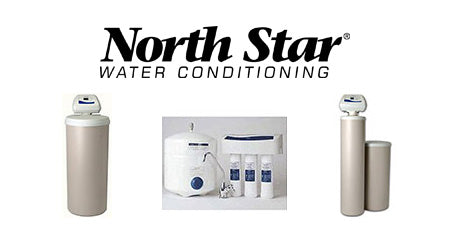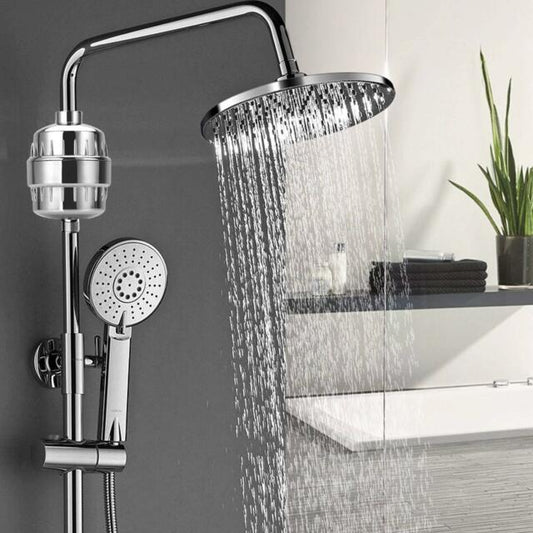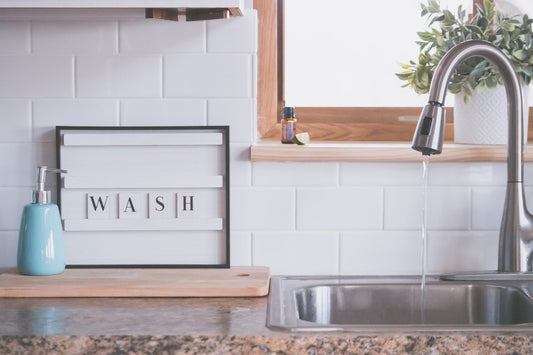Looking for a NorthStar Water Softener review? You’ve come to the right place.
In this article, we’re going to review NorthStar’s line of single tank and twin tank water softeners, with a focus on the NSC22 and the NST30ED, which are some of their most popular single tank and dual tank systems.
About NorthStar: What You Need to Know
NorthStar has been around since 1925. Their experience is, they say, one of the defining aspects of their brand.
Their systems are also sold only through professional contractors. NorthStar systems can’t be found at the big box stores or water softening storefronts. They also manufacture over 95 percent of the parts in their own systems.
What makes NorthStar water softeners different from every other water softener on the market?
Key Features of NorthStar Water Softeners
According to their website, there are a few different features that set NorthStar apart from everyone else:
-
Turbine water meter that “accurately measures the amount of water being softened down to 0.2 gallons per minute.”
-
Heavy duty valve that “has fewer moving parts than other valves, so there’s less to go wrong.”
-
Supercap timekeeper that, in the event of a power outage, will keep the water softener on schedule for up to 72 hours (so you won’t have to manually restart it).
What’s the Difference Between a Single Tank and Dual-Tank Water Softener?
Why would you need a dual-tank water softener over a single tank?
Ion-exchange salt-based water softeners need to regenerate in order to renew the resin that attracts magnesium and calcium. In a single tank softener, like NorthStar’s NSC22, that means there will be a (usually small) period of time where the system isn’t softening any water. It’s just regenerating. In a dual-tank system, like NorthStar’s NST30ED, there’s no downtime. While one tank is regenerating, the other is softening.
But, if most water softeners regenerate at night, what’s the point in buying two tanks? Well, by buying two tanks you actually reduce the amount of water you’ll use each day, which is more environmentally friendly. If your softener regenerates every night, it’s likely regenerating before the full capacity of the water softener has been reached. If you have a dual-tank system, you guarantee optimum efficiency (as far as ion exchange goes).
And, we should add, when less water is used, that means that cities are less likely to ban the water softener from being used.
NSC22 NorthStar Single Tank Features
So, with that said, the NSC22 is built for smaller homes with a limited demand for continuous running water. It’s appropriate, in that case, for a pretty hefty majority of residential applications.
Other features of the NSC22 include: a 22,000 grain capacity, 11.3 gallons per minute flow rate (at 30psi), and an iron removal rating of 6ppm.
This model is one of the cheapest, since it only has a 22,000 grain capacity. It goes for roughly $1,000 -- not including installation. That’s affordable, but you also have to take into account the salt and resin replacements over time, which add up to be quite a bit more than your standard template-assisted crystallization softener.
NST30ED NorthStar Twin Tank Features
The NST30ED, on the other hand, is built for continuous use -- and can therefore support pretty much every running tap in the house with no drop in water pressure or softened water.
It has a 35,6000 grain capacity (but that doesn’t matter much because you have two tanks, and the regeneration cycle isn’t really going to take that long), a 17.1gpm flow rate at 30psi (higher, of course, because of the multiple tanks), and an iron removal rate of 8ppm.
The price for the NST30ED is harder to find because of the lower demand. Not a lot of people actually need two tanks. However, Consolidated Supply Company has it listed for only $1100, making it the far better deal between these two NorthStar water softeners.
If you also think you don’t need two tanks, check out some of the single-tank models with a higher grain capacity like the NSC31 or NSCWC, which is their whole-house filter option. It’s similar to our FS1000Pro.
What Are People Saying about NorthStar?
A lot of NorthStar Water Softener reviews are mixed. On the one hand, they seem to do a decent job softening water. On the other hand, technical support is hit-or-miss.
The Amazon reviews for the NSC40UD1, for instance, have significantly more one-star reviews than five-star reviews. Here’s an example of the type of problem people are running into:
“Purchased the softner from a plumbing company. It constantly leaks water from the discharge hose. The company replaced the head and it stopped for a few months and started up again.”
The thing is: faulty systems -- even systems built with limited, simplistic parts like NorthStar’s -- happen. The important part isn’t that people never run into any issues; the important part is that the company’s tech support has a reasonable response to the problem. However, there’s even an instance where a caller got hung up on by tech support because they were “backlogged with callers.”
That isn’t a good sign.
Conclusion: NorthStar Water Softener Review
So, all in all, should you buy a NorthStar water softener or should you stay away?
NorthStar offers a pretty extensive line of single-tank and dual-tank water softeners. In this article, we reviewed the NSC22, a smaller-sized single tank softener, and the NST30ED, a dual-tank softener. Both are built with staple NorthStar features including a heavy duty valve, “Supercap” timekeeper, and a turbine water meter.
Naturally, the NST30ED can handle a slightly larger grain capacity. Since it’s dual-tank, though, you’re probably not going to need it.
What surprised us was the price of the systems. The NSC22 goes for about $1000 on most sites. The NST30ED, though, is listed as only $1100, making it the better deal of the two. Keep in mind, however, that this doesn’t include professional installation, which can get pretty pricey for ion exchange systems.
If you would like to check out one of the top domestic alternatives to ion exchange, our FilterSmart systems use template assisted crystallization to reduce limescale buildup. That means no salt, no wastewater, and no hassle. Check out our line of products here.






